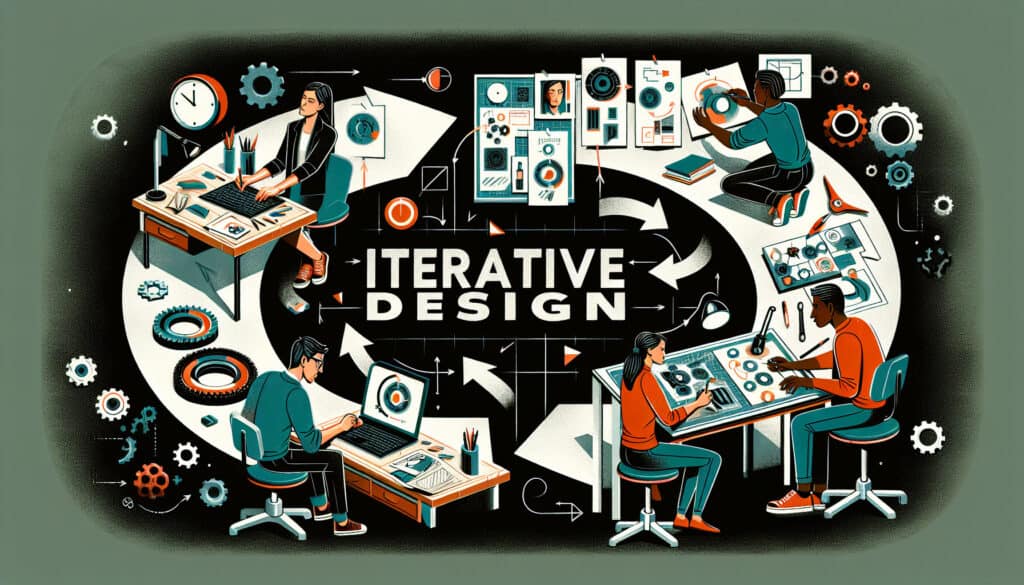A design methodology based on a cyclic process of prototyping, testing, analyzing, and refining a product or process.
- 方法: 客户与营销, 经济学, 产品设计
Iterative Design

Iterative Design
- 敏捷方法论, 持续改进, 设计过程, 设计审查, 设计思维, 迭代开发, 原型设计, 以使用者為中心的設計
目标
如何使用
- A design process that involves creating a series of prototypes that are tested and refined in a cyclical manner. This allows designers to get feedback from users early and often, and to make improvements to the design throughout the development process.
优点
- Allows for flexibility and adaptation throughout the design process; Reduces the risk of failure by getting feedback early and often.
缺点
- Can be time-consuming and may not be suitable for projects with tight deadlines; Can lead to scope creep if not managed carefully.
类别
- 工程, 产品设计
最适合:
- Developing new products and services in a flexible and 以用户为中心 way.
Iterative Design is particularly beneficial in industries such as consumer electronics, automotive, software development, and healthcare, where rapid technological advancements and user preferences are constantly evolving. This methodology is typically employed during the product development phase, where designers and engineers collaborate with end-users to create multiple versions of a product, each refined based on user feedback, usability studies, and testing results. By initiating this process, cross-functional teams including designers, product managers, engineers, and marketing representatives 从事 in brainstorming sessions that encourage creative solutions to user problems. For example, in software development, beta testing phases are a form of Iterative Design where software can undergo multiple rounds of revisions based on user interactions, ultimately leading to a more polished final product. In the consumer electronics sector, companies like 苹果 and Samsung often release prototypes to small user groups to gather detailed feedback on design, functionality, and user experience before launching the final version. This approach not only accelerates innovation but also minimizes the risk of market failure since real user expectations and experiences are considered in each iteration, allowing teams to pivot quickly in response to feedback without substantial resource investment in a single untested design.
该方法的关键步骤
- Define user needs and requirements based on stakeholder input.
- Sketch initial design concepts that address user needs.
- Create low-fidelity prototypes to visualize concepts.
- Conduct usability testing with target users on prototypes.
- Gather user feedback and identify areas for improvement.
- Refine design based on feedback and insights.
- Develop higher-fidelity prototypes incorporating revisions.
- Repeat usability testing with updated prototypes.
- Continue iterating until user satisfaction and design goals are met.
专业提示
- Incorporate user 人们 into your prototypes to address specific needs and preferences of different user segments.
- Utilize A/B testing on design variations to gather comparative data and make informed decisions based on user behavior.
- Implement rigorous documentation at each iteration to track changes, decisions, and user feedback systematically, facilitating later phases of development.
历史背景
1949
1950
1950
1960
1960
1960
1960
1940
1950
1950
1958
1960
1960
1960
1960
(如果日期不详或不相关,例如 "流体力学",则对其显著出现的时间作了四舍五入的估计)。















相关文章
制造运营管理(MOM)
制造执行系统(MES)
生产控制计划
人工测试
手动搬运评估表 (MAC)
手动任务风险评估工具(ManTRA)